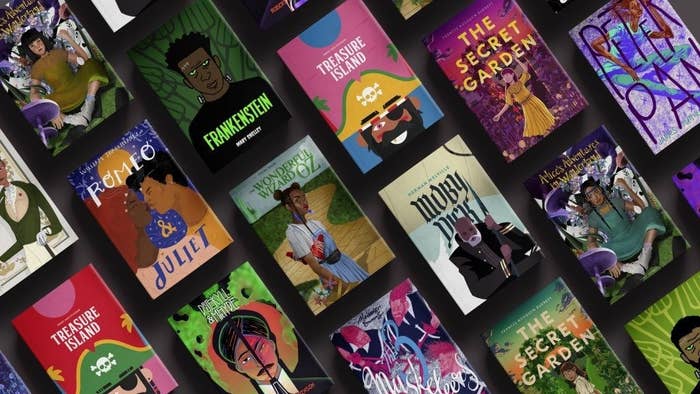Barnes And Noble Scrapped A Plan To Put “Diverse” Faces On The Cover Of Classic Books After Backlash
Share
Explore Our Galleries
Breaking News!
Today's news and culture by Black and other reporters in the Black and mainstream media.
Ways to Support ABHM?

Penguin Random House, Barnes and Noble and advertising company TBWA
“We ain’t even gonna talk about the metaphor of the black man on the cover of Frankenstein”
By Amber Jamieson, buzzfeednews.com
A publishing initiative to celebrate Black History Month by putting cartoon black and brown protagonists on the covers of classics novels written by white people — including The Secret Garden, Moby Dick and Alice in Wonderland — has been scrapped after backlash that called it literary blackface.
Dubbed “Diverse Editions,” the covers included Mary Shelley’s Frankenstein as a black man with an afro, Dorothy from The Wonderful Wizard of Oz holding a pair of red sneakers instead of ruby slippers and Juliet, from Romeo and Juliet, wearing a hijab.
The project was created by Penguin Random House, Barnes and Noble, and advertising company TBWA.
But people quickly slammed the idea, calling it disrespectful to center white authors in Black History Month using black faces, rather than promoting black writers.
Author LL McKinney called it “literary blackface.”…
“Giving Dorothy ruby Jordans DOES NOT CHANGE THE WORDS INSIDE THE BOOK,” tweeted writer Kendra James…
“Slapping brown people on classic books, some of which are problematic, isn’t diversity,” tweeted author Seressia Glass…
Barnes and Noble Fifth Avenue announced on Wednesday afternoon that the initiative has been suspended and its launch event cancelled.
“The covers are not a substitute for black voices or writers of color, whose work and voices deserve to be heard,” read the statement. “The booksellers who championed this initiative did so convinced it would help drive engagement with these classic titles…”
Full article here
More Breaking News here
See ABHM galleries here
Black History Month books here
Books for all ages here









Comments Are Welcome
Note: We moderate submissions in order to create a space for meaningful dialogue, a space where museum visitors – adults and youth –– can exchange informed, thoughtful, and relevant comments that add value to our exhibits.
Racial slurs, personal attacks, obscenity, profanity, and SHOUTING do not meet the above standard. Such comments are posted in the exhibit Hateful Speech. Commercial promotions, impersonations, and incoherent comments likewise fail to meet our goals, so will not be posted. Submissions longer than 120 words will be shortened.
See our full Comments Policy here.